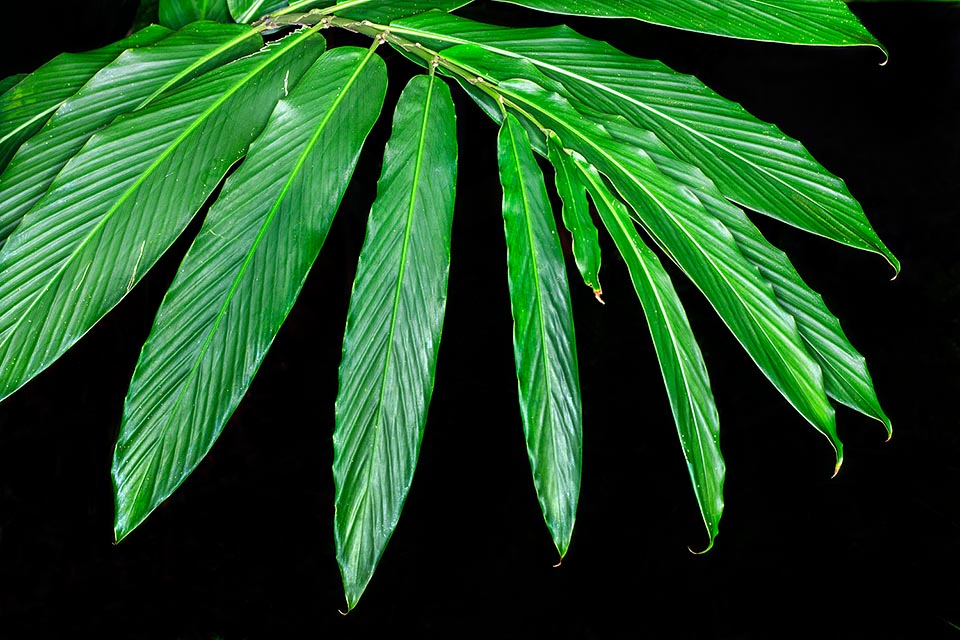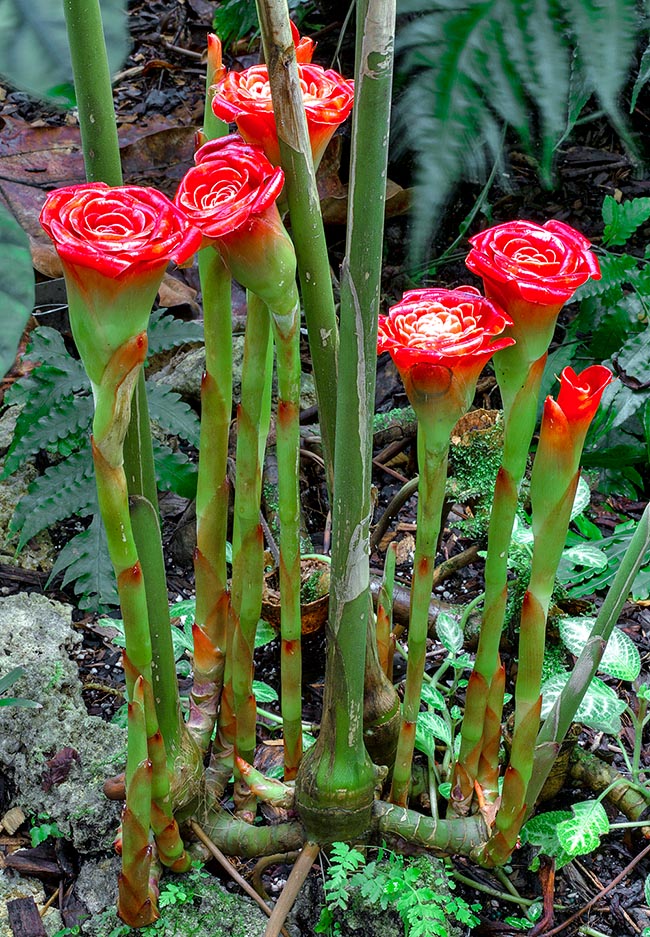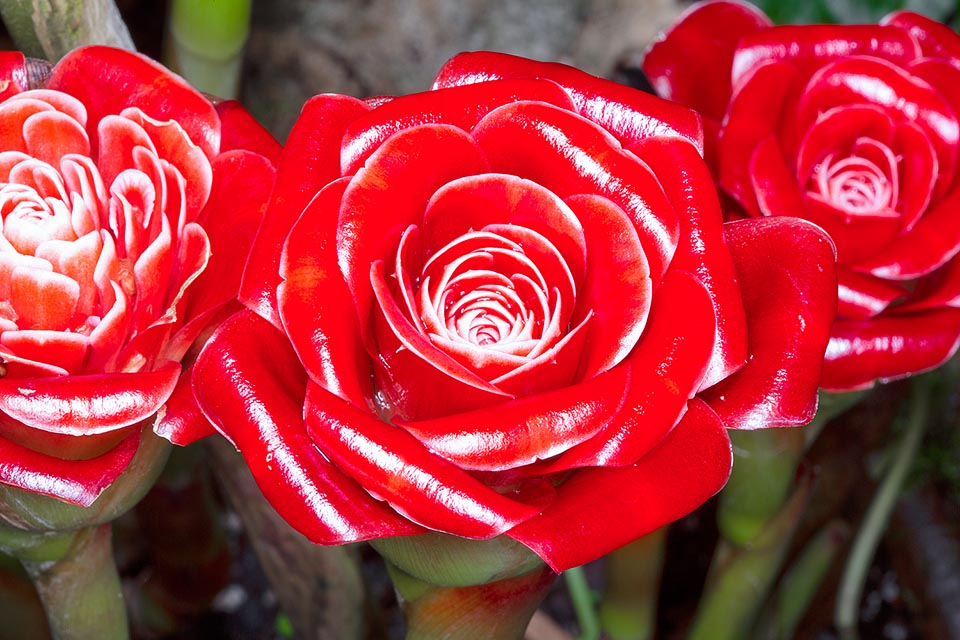Family : Zingiberaceae

Text © Pietro Puccio

English translation by Mario Beltramini

The Etlingera corneri is a perennial rhizomatous herbaceous species, evergreen, up to 4 m tall, native to Malyasia and Thailand. The leaves, glossy dark green on short petiole, are oblong-elliptical, plicate, with acuminate apex. At the base of the pseudostem they are about 60 cm long but then decrease progressively towards the apex © Giuseppe Mazza
The species is native to northern peninsular Malaysia and southern peninsular Thailand where it grows in the underwood of the humid forests, mainly in swampy areas, at low altitudes.
The name of the genus is honoured to the German botanist of the XVIII century Andreas Ernst Etlinger, author of the “Commentatio Botanico-Medica de Salvia” (1777); the species is dedicated to the English botanist and mycologist Edred John Henry Corner (1906-1996), who was the assistant director in the Singapore Botanic Gardens and professor of tropical botany at the University of Cambridge.

From the rhizomes, often emerging, start showy inflorescences on 30-70 cm peduncles © Giuseppe Mazza
Common names: rose of Siam (English).
The Etlingera corneri Mood & Ibrahim (2000) is a perennial rhizomatous herbaceous species, evergreen, up to 4 m tall, with horizontal rhizomes, of 3-4 cm of diameter, located just under the level of the soil, or over, supported by stilt roots 10-20 cm long.
Erect pseudostems, close together, provided per about 2/3 of the length of leaves, on short petiole, simple, oblong-elliptical with acuminate apex, plicate, the lower ones about 60 cm long and 15 cm broad, progressively decreasing towards the apex, of glossy dark green colour.
Terminal inflorescences directly from the rhizome, on a 30-70 cm long peduncle, about 10 cm long and of diameter, formed by several imbricate bracts oblong elliptical with rounded and retroflexed apex, spirally arranged, green below and bright red over, waxy, long-lasting.
The outer bracts are sterile, 6-8 cm long and 2-5 cm broad, the inner ones, 4-6 cm long and 1-4 cm broad, subtend the flowers, 5-6 cm long, of short duration opening in succession 1-5 at the time.
Trilobate tubular calyx, about 4 cm long, white at the base, red at the apex, tubular corolla with thin tub, 1,5-2 cm long, and 3 erect lobes, about 2 cm long, of pink colour, labellum, about 2 cm long and 1,2 cm broad, white streaked with red, united at the base to the stamen, and trilocular ovary. The fruits are fleshy ovoid capsules, 3-4 cm long and of about 2 cm of diameter, orange red when ripe, containing numerous brown seeds covered by whitish aril.
It reproduces by seed, previously kept in water for one day, in organic draining loam maintained humid at the temperature of 24-28 °C, and by division.
Among the most spectacular and floriferous of the genus, requires a humid warm tropical climate, a position from slightly shaded to shaded and soils rich of organic substance, preferably slightly acidic to neutral, maintained constantly humid.
Elsewhere, it is to be cultivated in the ground or in capacious containers in warm-humid greenhouse with lowest temperatures not under the 18 °C and humidity of the 80% or more; possible nebulizations, in case of not sufficient humidity, are to be done with non calcareous water at ambient temperature.

The flaming bracts of the inflorescence, 10 cm broad, subtend to ephemeral flowers, 5-6 cm long, opening in succession © Giuseppe Mazza
Monthly fertilizations, in spring summer, utilizing preferably a product balanced with microelectronics. In little aerated closed environment it may easily be subject to parasites attacks, therefore it is to be frequently controlled in order to be able to intervene with specific products.
The cut inflorescences are very much appreciated for floral arrangements thanks to their long duration.
Synonyms: Etlingera terengganuensis C.K.Lim (2000).
